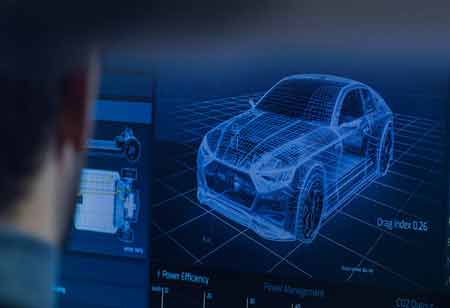THANK YOU FOR SUBSCRIBING
THANK YOU FOR SUBSCRIBING
Be first to read the latest tech news, Industry Leader's Insights, and CIO interviews of medium and large enterprises exclusively from Auto Tech Outlook

By
Auto Tech Outlook | Tuesday, February 25, 2025
Stay ahead of the industry with exclusive feature stories on the top companies, expert insights and the latest news delivered straight to your inbox. Subscribe today.
Over-the-air (OTA) updates transform vehicle maintenance by enabling remote software enhancements, bug fixes, and feature upgrades. This offers convenience, cost savings, improved performance, enhanced safety, personalized experiences, and environmental benefits for manufacturers and consumers.
FREMONT, CA: Over-the-air (OTA) updates have emerged as a transformative feature within the automotive industry, bringing innovative solutions for maintaining and enhancing modern vehicles. Leveraging wireless technologies, these updates enable automakers to deliver new functionalities, deploy software patches, and improve vehicle performance remotely.
Convenience and Efficiency
One of the primary advantages of OTA updates is the convenience they provide. Traditionally, vehicle enhancements or troubleshooting required a visit to a dealership for manual software updates. With OTA updates, owners can receive upgrades and fixes directly at home or wherever the vehicle is parked. This saves time and eliminates scheduling appointments or waiting in queues.
Enhanced Vehicle Performance
OTA updates allow manufacturers to refine and optimize vehicle functionalities post-purchase. Whether it's improving acceleration algorithms for electric vehicles, enhancing fuel efficiency, or tweaking user interfaces, these updates ensure that drivers experience continual improvement in their cars. Over time, this ensures the vehicle remains up-to-date with the latest technology and trends.
Cost Savings for Manufacturers and Consumers
OTA updates help manufacturers reduce operational costs by minimizing trips to dealerships. For consumers, this translates into fewer service fees and reduced downtime. Furthermore, automakers save on recalls for minor software-related issues since such problems can be addressed without physical intervention, leading to overall cost efficiency.
Improved Safety and Security
Modern vehicles increasingly rely on software for critical functions, from braking systems to driver assistance features. OTA updates can be instrumental in swiftly addressing vulnerabilities, ensuring the vehicle's safety remains uncompromised. Manufacturers can deploy patches against cybersecurity threats or fix bugs in real-time, keeping vehicles secure amid rising digital threats.
Personalized User Experience
Through data analysis, automakers can understand how customers interact with their vehicles. OTA updates can then provide enhancements that are tailored to individual user preferences. For instance, a driver frequently using certain navigation features might receive updates to improve functionality or add complementary features. This personalization adds significant value to the overall ownership experience.
Environmental Benefits
Reducing the reliance on physical dealership visits for software updates has an additional advantage—lower carbon emissions. Fewer trips to service centers mean reduced fuel consumption, leading to a smaller carbon footprint. Additionally, with features like adaptive energy use being updated remotely, electric vehicles can utilize resources more efficiently, further contributing to environmental conservation.
Real-Time Problem-Solving
OTA updates empower automakers to act when issues are identified. Instead of waiting for customers to report problems or scheduling mass recalls, manufacturers can proactively deliver fixes, ensuring driver satisfaction and maintaining brand reputation.
Future Implications
The potential of OTA updates extends beyond the current scope. With the rise of autonomous vehicles and connected car ecosystems, seamless software updates will be even more critical. OTA capabilities will support advanced driver assistance systems (ADAS) enhancements and integration with smart city infrastructure, keeping vehicles aligned with technological advancements.
Over-the-air updates are redefining the way modern vehicles are maintained and enhanced. With the convenience of remote upgrades, bolstered safety, cost savings, and environmental benefits, OTA updates are an essential feature for contemporary automobiles. As the automotive industry continues to evolve, the integration, sophistication, and accessibility of OTA technology will undoubtedly become a defining factor in vehicle development and driver experience.
 Copyright © 2025 AutoTech Outlook. All Rights Reserved | Privacy Policy | Subscribe | Sitemap | About us | Feedback Policy | Editorial Policy
Copyright © 2025 AutoTech Outlook. All Rights Reserved | Privacy Policy | Subscribe | Sitemap | About us | Feedback Policy | Editorial Policy 



